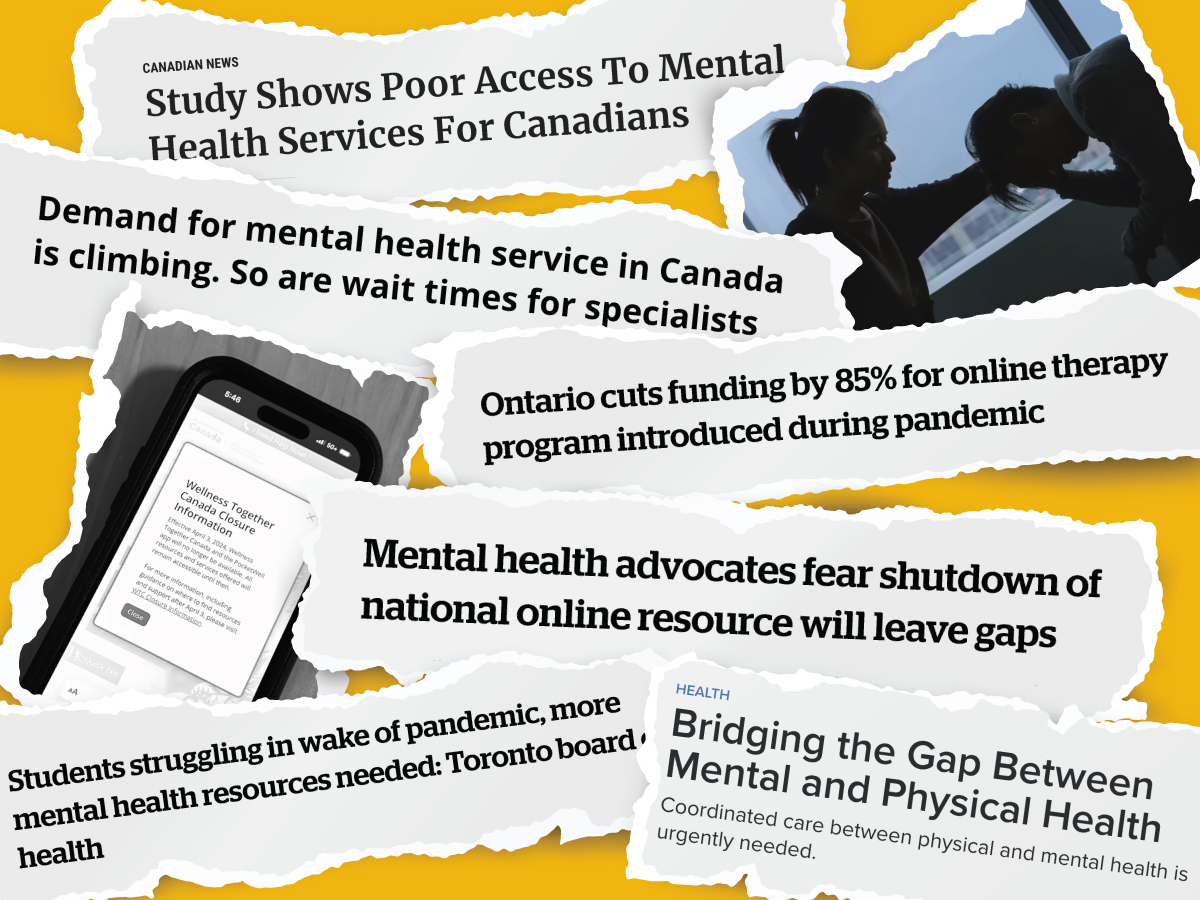
Mental health challenges are prevalent and pose significant costs to workplaces. At the same time, a lack of mental health resources often leaves employees’ needs unmet. Mental health is the leading cause of disability nationwide, accounting for roughly 30 percent of short and long-term disability claims. The economic impact is substantial, costing Canadian employers an estimated $6 billion annually in lost productivity due to absenteeism, presenteeism, and turnover. Current projections suggest that by 2030, depression will become the primary cause of illness burden globally.
Sadly, such staggering statistics have not compelled sufficient public or (often) private funding for appropriate mental health policies, programs, services, or supports.
Filling The Gaps in Coverage
Workplaces have a pivotal role to play as a resource for mental health care and support.
Despite increased research and policy efforts to enhance timely and equitable access to mental health resources in the public system, significant gaps persist. The recent closure of Wellness Together Canada by the federal government exemplifies this issue.
Launched in 2020, this digital mental health platform attracted over 4.2 million visitors seeking information or mental health and substance use services, underscoring the ongoing need for accessible mental health support.
EFAPs (Employee & Family Assistance Programs) are an important first step in supporting workplace mental health. They offer a range of services that can support employees and their families as they navigate situations or seek to enhance healthy habits overall. However, EFAPs are not enough in and of themselves. Traditionally, these programs have focused on short-term, solution-focused counselling needs. While some EFAPs have indeed expanded their suite of services to include important features like iCBT, they may not always adequately support individuals with chronic or ongoing mental illness.
Many employers also provide extended health benefits that offer coverage for mental health services. Benefit levels vary widely, with some plans having outdated maximums that may only cover the cost of one or two visits. In contrast, some employers are leading the way with significantly enhanced annual maximums, indicating a growing recognition of the need for comprehensive and ongoing care.
Despite the trend toward increasing mental health benefits in employer-sponsored plans, the annual maximums may still fall short. The Canadian Psychological Association (CPA) recommends coverage between $3,500 and $4,000 for full treatment using evidence-based care. Without sufficient government or employer-sponsored options, individuals often must pay out of pocket for mental health support, which can be a significant barrier to access.
The 2023 Benefits Canada Health Care Survey found that mental health/therapy is the highest out-of-pocket expense for plan members, highlighting the pressing need for improved mental health coverage.
When evaluating the impact of mental illness on the workplace, it is prudent to consider enhanced offerings.
The Evolution of Virtual Care
Virtual care has experienced significant growth, not only in its availability but also in the variety of services and support it offers for mental health. Self-directed, comprehensive platforms often provide various interventions along the entire continuum of care. Some providers offer integrated applications that encompass meditation, exercise, Employee and Family Assistance Program (EFAP) access, iCBT and ongoing therapy. Several insurers have collaborated with virtual care services to offer preferred pricing. These options can complement existing traditional benefit plans and cater to a wide range of needs.
It’s also worth noting that adding elements of virtual care can really contribute to the value employees place on their benefit plans. The 2023 Benefits Canada Health Care Survey suggests that the inclusion of virtual care has a positive influence on employees’ perceptions of their benefit plans. When virtual care is part of the package, 86% of employees describe their plan as excellent or good!
Communicate Effectively and Often
It is crucial to ensure that employees understand the benefits available for themselves and their covered family members. The value of a comprehensive benefits plan is diminished if employees are unaware of what is offered or how to access these benefits.
Similar to adding virtual care, an effective communication strategy has a positive impact on how employees feel about the quality of their benefit plan. The 2023 Benefits Canada Health Care Survey indicates that when employees do not understand the group plan, only 57% describe it as excellent or good. Conversely, when employees understand the group plan very well, 87% describe the plan as excellent or good!
The journey towards achieving comprehensive mental health coverage in the modern workplace is an ongoing process, and benefit programs play a critical role in this journey. Implementing robust mental health benefits can significantly enhance the well-being of employees and contribute to the success and resilience of organizations.
Presented by

Archives
Categories
- Attraction and Recruitment
- Benefits
- Celebrating Success and Recognition
- Change Management
- Conflict Resolution and Coaching
- Culture
- Diversity, Equity and Inclusion
- Emotional Intelligence
- Employee Engagement
- Employee Performance
- Labour Disruption
- Mentoring
- OMHRA activities
- OMHRA Events
- Psychological health and safety of the HR professional
- Recruitment
- Recruitment and Retention
- Retention
- Uncategorized
- Unique ideas for recruiting in a tight job market
- Wellness
Recent Posts
- How Leadership Development Coaching Provides Better Outcomes
- Better Leadership: Focus on a Coach Approach
- Creating a Psychologically Safe Workplace
- Group Health Insurance – The Impact of Preferred Pharmacy Networks on Employees’ Mental Health
- Provide Real Support For Your Mid-Career Team’s Psychological Resilience

